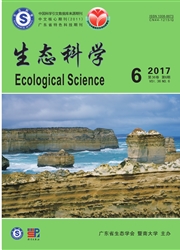

 中文摘要:
中文摘要:
以中国沿海典型赤潮藻东海原甲藻为实验材料,研究了不同生长阶段以及温度、光照和氮源对其氨基酸氧化酶活性的影响。结果表明,在缺氮条件下东海原甲藻显示较高的氨基酸氧化酶活性。在15-30℃温度范围均检测出氨基酸氧化酶活性,较低温度下(15-20℃)的氨基酸氧化酶活性显著高于高温处理组(25-30℃)(p〈0.05),其中20℃时的酶活最高。在50-100μmol/(m2.s)的光强下,氨基酸氧化酶活性较高(0.38-0.47 fmol/(h.cell)),而在2μmol/(m2.s)的低光强下,虽然酶活受到显著抑制,但仍达到0.28 fmol/(h.cell)。氮源组成对氨基酸氧化酶活性具有显著影响,以丙氨酸为唯一氮源时的酶活最高(0.44fmol/(h.cell)),NH4++丙氨酸为氮源时的酶活最低(0.22 fmol/(h.cell))。研究显示,光照、温度和氮源是东海原甲藻氨基酸氧化酶活性的关键调控因子。东海原甲藻不仅能够有效利用游离氨基酸,而且适应较广的温度和较低的光照条件,这可能是东海原甲藻赤潮形成和持续的重要原因。
 英文摘要:
英文摘要:
Effects of growth phase,temperature,irradiance and nitrogen source on the amino acid oxidase(AO) activity of Prorocentrum donghaiense,a causative organism of large-scale harmful algal blooms(HABs) along the coastal waters of East China Sea,were investigated in the laboratory.The results showed that P.donghaiense displayed higher amino acid oxidase activity in N-depleted conditions.AO activity of P.donghaiense was detected at the temperatures ranging from 15 to 30 ℃,in which AO activity was significantly higher at lower temperatures(15 ℃-20 ℃) than that at higher temperatures(25 ℃-30 ℃)(p<0.05),and the maximum value was observed at 20 ℃.Although AO activity was relatively higher(0.38 to 0.47 fmol/(h.cell)) at higher irradiances(50-100 μmol/(m2.s)),AO activity was still up to 0.28 fmol/(h.cell) at irradiance of 2 μmol/(m2.s1).Nitrogen source exhibited a significant impact on AO activity of P.donghaiense.The highest AO activity(0.44 fmol/(h.cell)) was observed when alanine was used as the sole nitrogen source,and the lowest AO activity(0.22 fmol/(h.cell)) was recorded in the combination of ammonium and alanine.It suggested that temperature,irradiance and nitrogen source were key environmental factors regulating AO activity of P.donghaiense.P.donghaiense is not only capable of utilizing free amino acids effectively,but also flexible in adapting to broad temperature and lower irradiance,which may play important roles in the formation and duration of P.donghaiense blooms.
 同期刊论文项目
同期刊论文项目
 同项目期刊论文
同项目期刊论文
 Humic analog AQDS and AQS as an electron mediator can enhance chromate reduction by Bacillus sp stra
Humic analog AQDS and AQS as an electron mediator can enhance chromate reduction by Bacillus sp stra Compensatory growth of the bloom-forming dinoflagellate Prorocentrum donghaiense induced by nitrogen
Compensatory growth of the bloom-forming dinoflagellate Prorocentrum donghaiense induced by nitrogen Spatial and Seasonal Variations of Total Petroleum Hydrocarbonin Surface Water and Sediment in Pearl
Spatial and Seasonal Variations of Total Petroleum Hydrocarbonin Surface Water and Sediment in Pearl Promotion effects of nitrogen on the cell proliferation of Platymonas subcordiformis evaluated by sp
Promotion effects of nitrogen on the cell proliferation of Platymonas subcordiformis evaluated by sp Ecotoxicity of two organophosphate pesticides chlorpyrifos and dichlorvos on non-targeting cyanobact
Ecotoxicity of two organophosphate pesticides chlorpyrifos and dichlorvos on non-targeting cyanobact Ability of the marine diatoms Pseudo-nitzschia multiseries and P. pungens to inhibit the growth of c
Ability of the marine diatoms Pseudo-nitzschia multiseries and P. pungens to inhibit the growth of c Spatial–temporal distribution and potential ecological risk assessment of nonylphenol and octylpheno
Spatial–temporal distribution and potential ecological risk assessment of nonylphenol and octylpheno Spatial-temporal distribution of phthalate esters from riverine outlets of Pearl River Delta in Chin
Spatial-temporal distribution of phthalate esters from riverine outlets of Pearl River Delta in Chin Determination of enrofloxacin and ciprofloxacin in foods of animal origin by capillary electrophores
Determination of enrofloxacin and ciprofloxacin in foods of animal origin by capillary electrophores Distribution and Risk Assessment of Heavy Metals inSediments of the Pearl River Estuary, Southern Ch
Distribution and Risk Assessment of Heavy Metals inSediments of the Pearl River Estuary, Southern Ch Occurrence of phthalate esters in surface water and sediments from the Pearl River Delta, Southern C
Occurrence of phthalate esters in surface water and sediments from the Pearl River Delta, Southern C Inhibitory effects of Chinese traditional herbs and herb-modified clays on the growth of harmful alg
Inhibitory effects of Chinese traditional herbs and herb-modified clays on the growth of harmful alg Effect of Vitamin-B1 and Vitamin-B12 on the Growth and Carotenoid Content of Haematococcus pluvialis
Effect of Vitamin-B1 and Vitamin-B12 on the Growth and Carotenoid Content of Haematococcus pluvialis Toxic Effect of a Marine Bacterium onAquatic Organisms and Its AlgicidalSubstances against Phaeocyst
Toxic Effect of a Marine Bacterium onAquatic Organisms and Its AlgicidalSubstances against Phaeocyst Growth effects on mixed culture of Dunaliella salina and Phaeodactylum tricornutum under different i
Growth effects on mixed culture of Dunaliella salina and Phaeodactylum tricornutum under different i Allelopathic interactions between the red-tide causative dinoflagellate Prorocentrum donghaiense and
Allelopathic interactions between the red-tide causative dinoflagellate Prorocentrum donghaiense and 期刊信息
期刊信息
